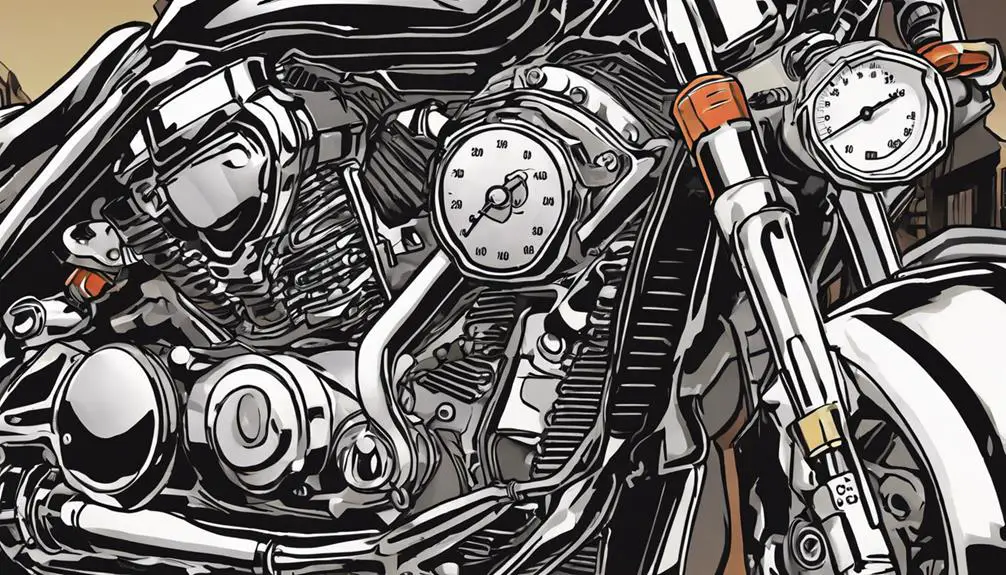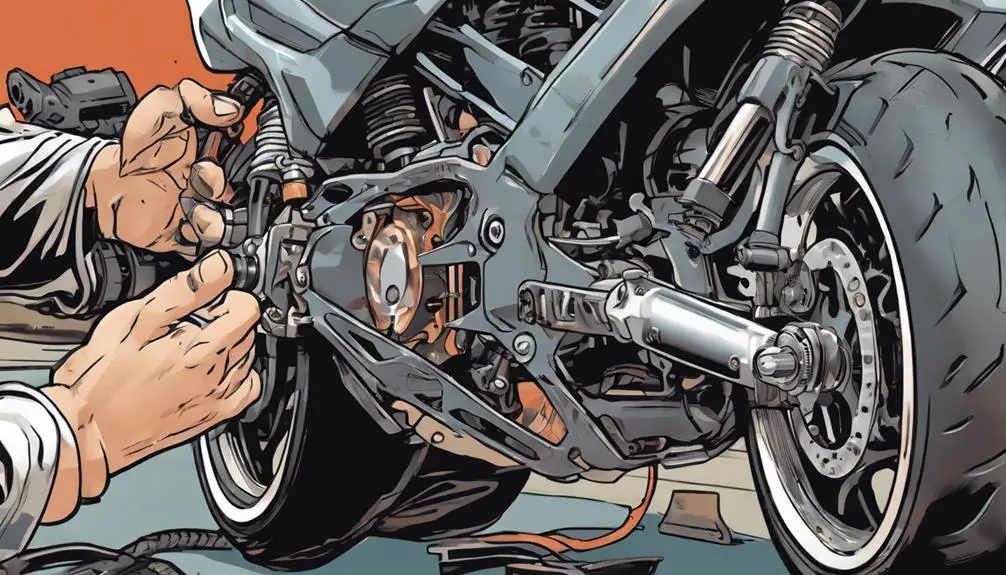Like a finely tuned orchestra, your sportbike relies on every component to harmonize perfectly, yet issues often arise that can disrupt this balance. You might find yourself grappling with overheating engines, electrical system failures, or suspension problems. These challenges can not only hinder performance but also impact safety on the road. By understanding the root causes and exploring practical solutions, you can keep your ride smooth and reliable. So, what are the best strategies to tackle these common issues?
Key Takeaways
- Overheating can be prevented by regularly checking coolant levels and inspecting the radiator for blockages or leaks.
- Electrical failures often stem from loose battery connections or blown fuses; ensure all connections are secure and replace any faulty components.
- Suspension issues can impact handling; adjust settings and check tire wear and alignment for improved stability.
- Low oil levels can damage the engine; maintain regular oil changes as per manufacturer guidelines to ensure optimal performance.
Overheating Engine Problems

If your sportbike's engine is overheating, it can lead to serious performance issues and costly repairs. You don't want to be stranded on the side of the road, feeling the heat rise not just from your engine but from frustration too. Knowing how to cool down your ride is crucial for your freedom on two wheels.
First, check the coolant level. Low coolant can cause overheating, so make certain it's topped off. If it's low, refill it with the proper mixture to keep your engine running smoothly.
Next, inspect the radiator for blockages or leaks. A dirty or damaged radiator restricts airflow, leading to overheating. Clean or replace it to guarantee peak performance.
Also, monitor your oil levels. Oil lubricates and cools your engine, so running low can spell disaster. Change your oil regularly, following your manufacturer's recommendations, to keep it fresh and effective.
Finally, give your sportbike a thorough inspection after every ride. Addressing small issues before they escalate is the key to maintaining that exhilarating freedom on the open road.
Stay vigilant, and your sportbike will reward you with thrilling rides without the burden of overheating.
Electrical System Failures
Electrical system failures can leave you stranded, so it's vital to understand how to troubleshoot and resolve these issues quickly.
You'll want to start by checking your battery connections. Loose or corroded terminals can prevent your bike from starting or cause intermittent electrical problems. Tighten those connections and clean off any corrosion you find.
Next, inspect your fuses. A blown fuse can disrupt power to important components like your lights and ignition system. Replace any blown fuses with the correct amperage to get your bike running smoothly again.
Don't forget to check the wiring harness for frays or breaks. A damaged wire can create short circuits, leading to more significant issues. If you spot any damage, repair or replace the affected sections.
Lastly, if your bike shows signs of a weak battery or inconsistent power, consider getting it tested or replaced. A healthy battery is essential for a reliable ride.
Suspension and Handling Issues

Addressing electrical issues is important, but don't overlook the significance of your bike's suspension and handling, as these factors greatly affect your overall riding experience.
A well-tuned suspension allows you to navigate corners with confidence, enhancing your sense of freedom on the road. If your bike feels bumpy or unstable, it's time to evaluate your suspension settings. Adjusting preload, compression, and rebound can transform your ride, making it smoother and more responsive.
Handling issues can arise from worn tires or improper alignment. Make sure your tires are in good condition and suited for your riding style. If your bike feels sluggish or unresponsive, inspect the front and rear alignment; any misalignment can hinder your ability to ride freely and safely.
Don't underestimate the impact of weight distribution either. If your bike feels top-heavy, consider adjusting your riding position or adding weight to stabilize it.
Ultimately, by addressing these suspension and handling issues, you'll reclaim the exhilarating experience of riding. Embrace the liberation that comes with a bike that handles like a dream, and hit the open road with confidence and joy.
Frequently Asked Questions
How Can I Improve My Sportbike's Fuel Efficiency?
To improve your sportbike's fuel efficiency, start by ensuring your tires are properly inflated; under-inflated tires can decrease mileage.
Regularly maintain your bike, including oil changes and air filter cleanings, to keep it running smoothly.
Consider adjusting your riding style; smooth acceleration and braking can save fuel.
Finally, remove any unnecessary weight from your bike, as a lighter ride uses less fuel.
Enjoy the freedom of the road while maximizing your efficiency!
What Gear Should I Wear for Optimal Safety?
To ride with ideal safety, you need to invest in high-quality gear.
Start with a full-face helmet for maximum protection and verify it fits snugly.
Wear a durable leather or textile jacket with armor at critical points, like shoulders and elbows.
Don't forget gloves that offer grip and protection, plus sturdy riding pants or a suit.
Finally, choose proper riding boots that cover your ankles.
This gear lets you ride confidently and freely!
How Often Should I Replace My Sportbike Tires?
When it comes to replacing your sportbike tires, you can't afford to cut corners.
Generally, you should replace them every 5,000 to 7,000 miles, but keep an eye on tread wear and performance.
If you notice any cracks or irregularities, it's time to swap them out, regardless of mileage.
Staying ahead of tire maintenance guarantees your ride's smooth and safe, giving you the freedom to enjoy the open road without worries.
What Modifications Can Enhance My Bike's Performance?
When you're looking to boost your bike's performance, consider upgrading the exhaust system for better airflow, or installing a high-performance air filter.
Re-gearing the sprockets can enhance acceleration, while adding a power commander can optimize fuel maps.
Don't forget about suspension upgrades; they can considerably improve handling.
Lightweight wheels can reduce inertia, making your ride more responsive.
Each modification can bring you closer to that exhilarating freedom on the road.
How Do I Choose the Right Sportbike for My Skill Level?
Choosing the right sportbike for your skill level is essential for your riding experience. Start by evaluating your comfort with speed and handling.
If you're a beginner, consider lighter models with lower horsepower; they're easier to control. As you gain confidence, you can explore more powerful bikes.
Always test ride different options to feel what suits you best. Remember, it's about enjoying the ride, so prioritize your safety and comfort over raw power.
Conclusion
In summary, tackling these top three sportbike issues—overheating engines, electrical failures, and suspension problems—can greatly enhance your riding experience.
By staying proactive with maintenance and addressing concerns early, you'll not only improve performance but also guarantee your safety on the road.
So, why risk your ride's reliability when a few simple checks can make all the difference?
Keep your sportbike in prime condition, and you'll enjoy every twist and turn with confidence.